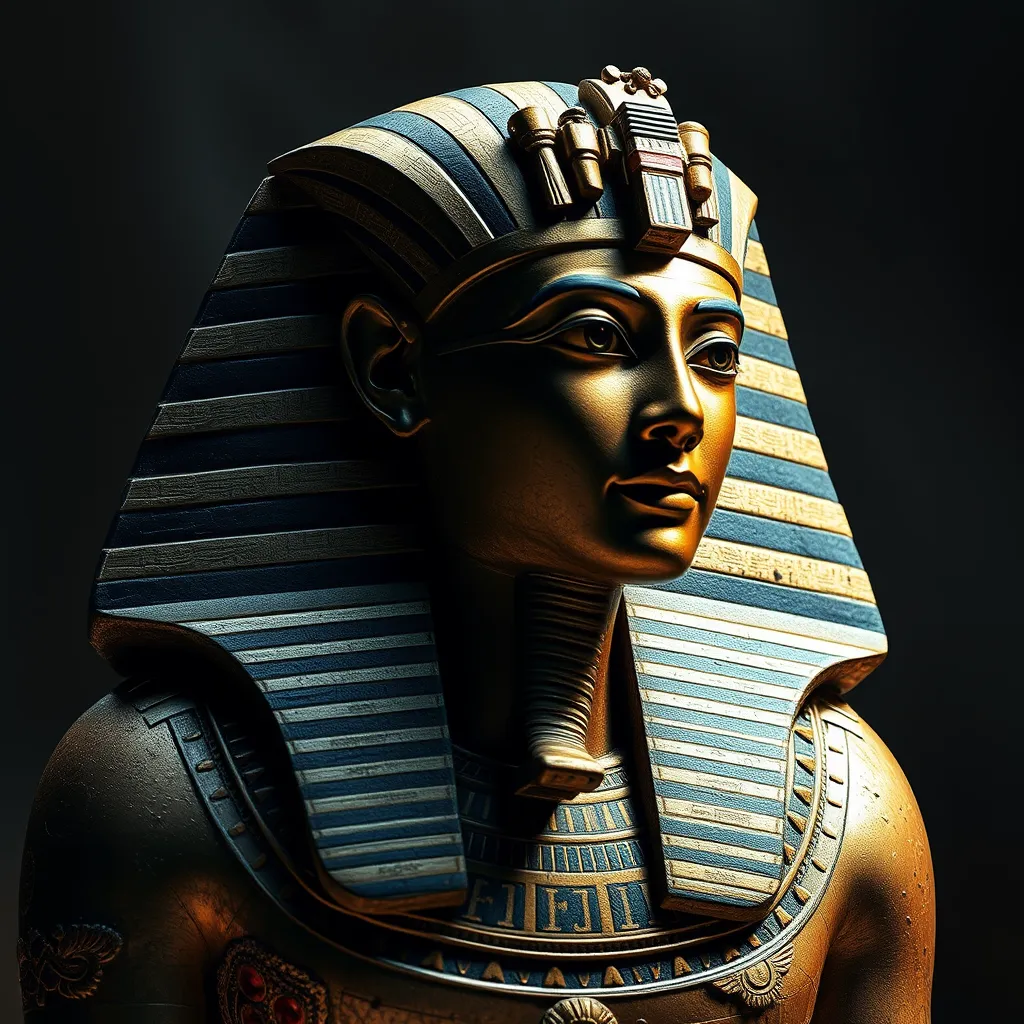The Royal Lineage: Tracing the Bloodlines of Ancient Egyptian Pharaohs
I. Introduction
Ancient Egypt, one of the world’s oldest and most fascinating civilizations, has captivated historians, archaeologists, and the general public for centuries. Encompassing thousands of years of history, this civilization is renowned for its monumental architecture, intricate artwork, and rich mythology. Central to the narrative of Ancient Egypt are the pharaohs, who ruled as both political leaders and divine figures.
The importance of the pharaohs in Egyptian history cannot be overstated. They were seen as mediators between the gods and the people, responsible for maintaining ma’at, the balance of the universe. This article aims to explore the royal lineage of these rulers, tracing their bloodlines and understanding the significance of their ancestry in the context of Ancient Egyptian society.
II. The Concept of Kingship in Ancient Egypt
To understand the lineage of the pharaohs, one must first comprehend the concept of kingship in Ancient Egypt. The term “pharaoh” originates from the Egyptian phrase “per-aa,” meaning “great house,” referring to the royal palace.
- Definition of Pharaohs and their roles: Pharaohs were considered the supreme rulers of Egypt, wielding absolute power over the land and its people. They were both political leaders and religious figures, often depicted as gods on earth.
- The divine right of kings: Pharaohs were believed to be chosen by the gods, particularly Horus, the sky god. This divine connection legitimized their rule and reinforced the idea that their authority was divinely sanctioned.
- The significance of lineage: Maintaining a pure royal bloodline was essential for the legitimacy of the pharaoh. The belief that a direct descent from deities ensured the stability and prosperity of the kingdom.
III. The First Dynasties: Origins of the Pharaohs
The origins of the pharaohs can be traced back to the early dynasties of Egypt, particularly during the unification of Upper and Lower Egypt around 3100 BCE.
- The unification of Upper and Lower Egypt: This pivotal event marked the beginning of the First Dynasty, with Narmer (also known as Menes) credited as the first pharaoh to unite the two regions.
- Key figures in the early dynasties: The early dynasties produced several notable pharaohs, including Djoser, known for commissioning the Step Pyramid, and Sneferu, who built the first true pyramids.
- Archaeological evidence: Excavations and discoveries, such as the Narmer Palette, provide insight into the royal lineage and the significance of these early rulers.
IV. Notable Pharaohs and Their Family Trees
As we delve deeper into the royal lineage, several pharaohs stand out for their unique contributions and fascinating family histories.
- Hatshepsut: One of the few female pharaohs, Hatshepsut ruled in the 18th Dynasty. She was the daughter of Thutmose I and married her half-brother Thutmose II. After his death, she declared herself pharaoh, adopting male regalia and establishing a prosperous reign.
- Tutankhamun: Often referred to as the “boy king,” Tutankhamun ascended to the throne at a young age. He was the son of Akhenaten and Nefertiti. His tomb, discovered largely intact in 1922, provided invaluable insights into royal burial practices and wealth.
- Ramses II: Known as Ramses the Great, he is one of the most famous pharaohs. His reign lasted 66 years, and he fathered over 100 children. Ramses II’s legacy includes monumental architecture, such as the temples at Abu Simbel, and a strong military presence.
V. The Role of Marriage in Royal Lineage
Marriage played a crucial role in the consolidation of power among the pharaohs. Strategic alliances through marriage were common, ensuring that royal bloodlines remained strong and influential.
- Strategic marriages: Royal marriages often served to solidify political alliances. For example, Hatshepsut’s marriage to Thutmose II linked two powerful families.
- Incestuous practices: To preserve the purity of the bloodline, it was not uncommon for pharaohs to marry siblings or close relatives. This practice, while controversial, was believed to ensure a direct lineage to the gods.
- Examples of notable royal marriages: The union of Akhenaten and Nefertiti is a prime example, as they sought to establish a new religious order that emphasized the worship of the sun disk, Aten.
VI. The Impact of Religion on Royal Bloodlines
Religion was intricately woven into the fabric of governance in Ancient Egypt, and it significantly influenced royal bloodlines.
- Divine heritage: The belief that pharaohs were divine beings justified their rule and commanded loyalty from their subjects.
- Temples and priesthoods: Temples played a key role in the political landscape, with priests wielding significant power. Pharaohs often appointed family members to high religious offices to strengthen their control.
- Intertwining of religion and governance: The pharaohs’ role as both political and religious leaders blurred the lines between governance and spirituality, reinforcing their authority.
VII. Decline of the Pharaohs and Legacy of the Bloodlines
Despite their powerful reigns, the pharaohs eventually faced decline due to various factors.
- Factors leading to decline: Economic troubles, foreign invasions, and internal strife contributed to the weakening of dynastic power. The invasion of the Hyksos and later foreign rule by the Assyrians and Persians fragmented the once-unified kingdom.
- Fragmentation of royal bloodlines: The decline of centralized power led to a loss of lineage continuity, with many noble families vying for control.
- Lasting impact: The legacy of the pharaohs continues to influence modern Egypt and the study of history, as their achievements in art, architecture, and governance lay the foundation for future civilizations.
VIII. Conclusion
In summary, the royal lineage of the pharaohs of Ancient Egypt offers profound insights into the structure of their society, the importance of divine kingship, and the intricate relationships that defined their rule. Understanding these bloodlines is not only crucial for comprehending Ancient Egyptian history but also for appreciating the cultural heritage that continues to resonate today.
The study of royal lineage remains a vital area for future research, as historians and archaeologists continue to uncover new evidence that may reshape our understanding of this remarkable civilization.




